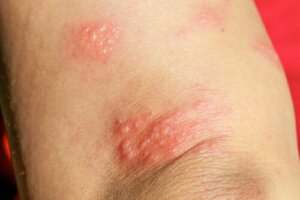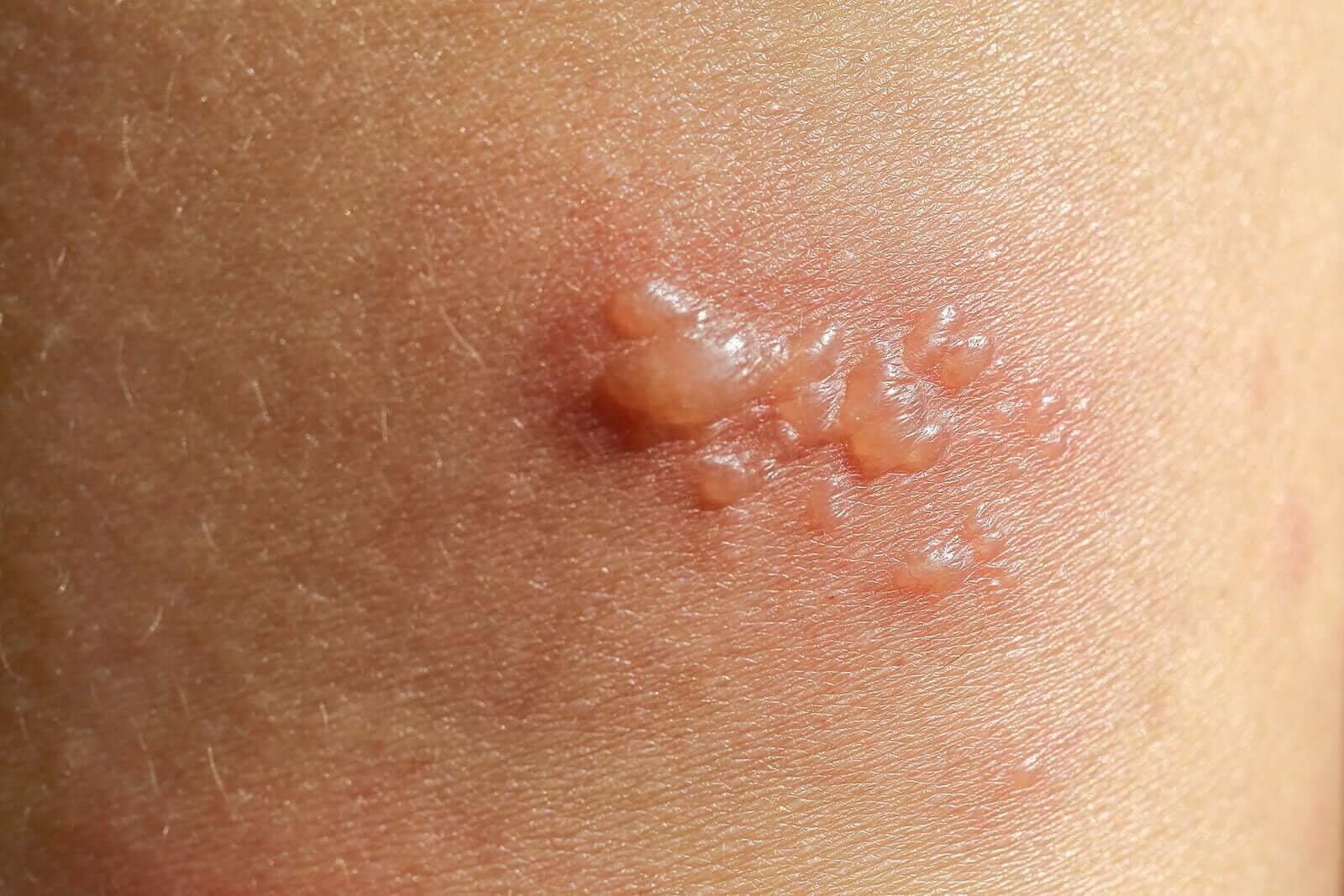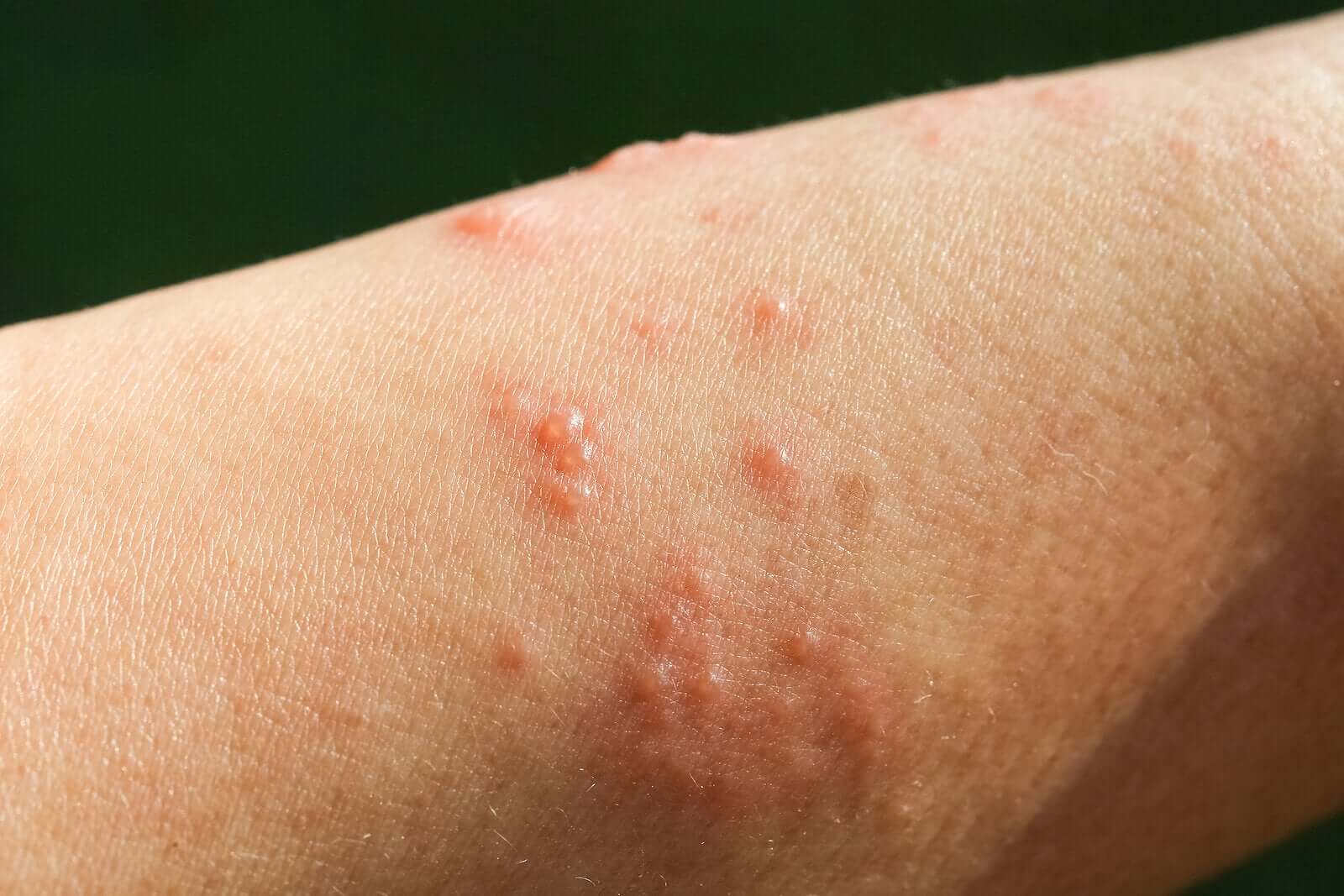Gestational Pemphigoid During Pregnancy


Written and verified by the dermatologist Maria del Carmen Hernandez
Pregnancy is often one of the happiest times for a woman. However, it can lead to pregnancy-related conditions that alter her quality of life. Gestational pemphigoid is a rare autoimmune pregnancy-specific blistering dermatosis. Its clinical manifestations are similar to blistering pemphigoid.
Why does gestational pemphigoid occur?
Gestational pemphigoid is most often triggered during the third trimester. However, it can occur during any of the three trimesters or after birth.
What produces the skin lesions is an autoimmune process involving autoantibodies. This means that the immune system mistakenly starts an attack on its own skin.
However, it resolves spontaneously within two months after birth, except in rare cases where it may last longer. According to studies in the Orphanet Journal of Rare Diseases, gestational pemphigoid occurs in an estimated one in 40,000-50,000 pregnancies with no difference in racial distribution.

Read also: Why Do I Have Itchy Skin during Pregnancy?
Clinical manifestations
The break out of gestational pemphigoid is polymorphic. Itching is the predominant symptom of the condition which can sometimes precede the appearance of skin lesions.
The itching starts in the periumbilical region, where a variety of red papules will later appear. These are urticariform erythematous plaques or erythema multiforme type lesions. Then, after about 3 weeks, the papules progress from vesicles to large, red, fluid-filled blisters.
Lesions that were initially localized begin to spread to the abdomen, extremities, and the rest of the body. However, it rarely affects the mucous membranes and face.
In 75% of cases, the disease reactivated at birth. However, gestational pemphigoid lesions usually disappear within 15 weeks of delivery without leaving any spots or scars.
Possible differential diagnosis
When diagnosing this condition, it’s important to rule out, in the consultation with the specialist, if pruritic urticarial papules and plaques of pregnancy are present. Also known as PUPPP, it’s another type of skin rash.
PUPPP is an itchy pregnancy dermatosis whose clinical manifestations are very similar to those of gestational pemphigoid. Their similarities are as follows:
- Both begin to appear first in the periumbilical region.
- Both occur more frequently in the third trimester.
- The rash disappears spontaneously a few weeks after birth.
There are very few characteristics that differentiate them. What’s more, PUPPP usually doesn’t progress to large fluid-filled blisters and, when it expands, it spreads to the legs and armpits as well.
How to confirm a diagnosis of gestational pemphigoid
The definitive diagnosis will take place in the specialist’s office with the patient’s symptoms and signs. According to the doctor’s criteria and the clinical findings at the time of the physical examination, he or she will indicate whether a biopsy of the lesion will be necessary.
This procedure involves the use of local anaesthesia and the removal of a portion of the lesion for laboratory analysis. The physician may even consider the removal of blood for subsequent analysis of the antigen levels in the blood.
You may be interested in: Prenatal Checkups During Pregnancy
Treatment and management of gestational pemphigoid
The treatment of gestational pemphigoid will depend on the stage of the skin lesions and the severity of the clinical picture. Two of the premises of treatment according to Dermatologic Clinics are as follows:
- Relieving the itching of the pregnant woman.
- Avoiding the production of new blisters.
Corticosteroids
In mild cases, doctors prescribe topical corticosteroid creams to reduce itching and inflammation of the injured area. During pregnancy, mild or moderate topical corticosteroids are preferable over strong or very strong ones.
Antihistamines
It’s possible to combine topical corticosteroid and oral antihistamine treatments to enhance the effect in reducing itching. Second generation antihistamines (cetirizine, levocetirizine and loratadine) are best for use during pregnancy.

Always consult your obstetrician before taking any medication if you’re pregnant. In fact, this applies to over-the-counter medications as well.
Hygiene and care measures
In mild cases, doctors will recommend implementing certain measures at home to help reduce itching:
- Keep the skin cool and moisturized.
- Stay in a cool or air-conditioned environment.
- Use 100% cotton clothing and avoid synthetic fabrics.
Gestational pemphigoid and quality of life
In short, the symptoms that this condition causes can produce a certain weakness in the pregnant woman. However, gestational pemphigoid doesn’t pose a direct risk to the mother’s health. A multidisciplinary approach between the gynecologist, obstetrician, and dermatologist is therefore necessary to ensure a coordinated and appropriate follow-up.
Pregnancy is often one of the happiest times for a woman. However, it can lead to pregnancy-related conditions that alter her quality of life. Gestational pemphigoid is a rare autoimmune pregnancy-specific blistering dermatosis. Its clinical manifestations are similar to blistering pemphigoid.
Why does gestational pemphigoid occur?
Gestational pemphigoid is most often triggered during the third trimester. However, it can occur during any of the three trimesters or after birth.
What produces the skin lesions is an autoimmune process involving autoantibodies. This means that the immune system mistakenly starts an attack on its own skin.
However, it resolves spontaneously within two months after birth, except in rare cases where it may last longer. According to studies in the Orphanet Journal of Rare Diseases, gestational pemphigoid occurs in an estimated one in 40,000-50,000 pregnancies with no difference in racial distribution.

Read also: Why Do I Have Itchy Skin during Pregnancy?
Clinical manifestations
The break out of gestational pemphigoid is polymorphic. Itching is the predominant symptom of the condition which can sometimes precede the appearance of skin lesions.
The itching starts in the periumbilical region, where a variety of red papules will later appear. These are urticariform erythematous plaques or erythema multiforme type lesions. Then, after about 3 weeks, the papules progress from vesicles to large, red, fluid-filled blisters.
Lesions that were initially localized begin to spread to the abdomen, extremities, and the rest of the body. However, it rarely affects the mucous membranes and face.
In 75% of cases, the disease reactivated at birth. However, gestational pemphigoid lesions usually disappear within 15 weeks of delivery without leaving any spots or scars.
Possible differential diagnosis
When diagnosing this condition, it’s important to rule out, in the consultation with the specialist, if pruritic urticarial papules and plaques of pregnancy are present. Also known as PUPPP, it’s another type of skin rash.
PUPPP is an itchy pregnancy dermatosis whose clinical manifestations are very similar to those of gestational pemphigoid. Their similarities are as follows:
- Both begin to appear first in the periumbilical region.
- Both occur more frequently in the third trimester.
- The rash disappears spontaneously a few weeks after birth.
There are very few characteristics that differentiate them. What’s more, PUPPP usually doesn’t progress to large fluid-filled blisters and, when it expands, it spreads to the legs and armpits as well.
How to confirm a diagnosis of gestational pemphigoid
The definitive diagnosis will take place in the specialist’s office with the patient’s symptoms and signs. According to the doctor’s criteria and the clinical findings at the time of the physical examination, he or she will indicate whether a biopsy of the lesion will be necessary.
This procedure involves the use of local anaesthesia and the removal of a portion of the lesion for laboratory analysis. The physician may even consider the removal of blood for subsequent analysis of the antigen levels in the blood.
You may be interested in: Prenatal Checkups During Pregnancy
Treatment and management of gestational pemphigoid
The treatment of gestational pemphigoid will depend on the stage of the skin lesions and the severity of the clinical picture. Two of the premises of treatment according to Dermatologic Clinics are as follows:
- Relieving the itching of the pregnant woman.
- Avoiding the production of new blisters.
Corticosteroids
In mild cases, doctors prescribe topical corticosteroid creams to reduce itching and inflammation of the injured area. During pregnancy, mild or moderate topical corticosteroids are preferable over strong or very strong ones.
Antihistamines
It’s possible to combine topical corticosteroid and oral antihistamine treatments to enhance the effect in reducing itching. Second generation antihistamines (cetirizine, levocetirizine and loratadine) are best for use during pregnancy.

Always consult your obstetrician before taking any medication if you’re pregnant. In fact, this applies to over-the-counter medications as well.
Hygiene and care measures
In mild cases, doctors will recommend implementing certain measures at home to help reduce itching:
- Keep the skin cool and moisturized.
- Stay in a cool or air-conditioned environment.
- Use 100% cotton clothing and avoid synthetic fabrics.
Gestational pemphigoid and quality of life
In short, the symptoms that this condition causes can produce a certain weakness in the pregnant woman. However, gestational pemphigoid doesn’t pose a direct risk to the mother’s health. A multidisciplinary approach between the gynecologist, obstetrician, and dermatologist is therefore necessary to ensure a coordinated and appropriate follow-up.
All cited sources were thoroughly reviewed by our team to ensure their quality, reliability, currency, and validity. The bibliography of this article was considered reliable and of academic or scientific accuracy.
- Kukkamalla RM, Bayless P. Pemphigoid Gestationis. Clin Pract Cases Emerg Med. 2019 Jan 7;3(1):79-80. doi: 10.5811/cpcem.2018.11.39258. PMID: 30775676; PMCID: PMC6366384.
- Huilaja, L., Mäkikallio, K. y Tasanen, K. Penfigoide gestacional. Orphanet J Rare Dis 9, 136 (2014). https://doi.org/10.1186/s13023-014-0136-2
- Lobato-Berezo A, Fernández Figueras MT, Moreno Romero JA, Pujol RM. Pemphigoid Gestationis Mimicking Erythema Multiforme With Mucosal Involvement. Actas Dermosifiliogr. 2019 Oct;110(8):696-697. English, Spanish. doi: 10.1016/j.ad.2018.02.038. Epub 2019 Feb 4. PMID: 30732852.
- Intong LR, Murrell DF. Pemphigoid gestationis: current management. Dermatol Clin. 2011 Oct;29(4):621-8. doi: 10.1016/j.det.2011.06.013. Epub 2011 Aug 15. PMID: 21925007.
- Bechtel MA. Pruritus in Pregnancy and Its Management. Dermatol Clin. 2018 Jul;36(3):259-265. doi: 10.1016/j.det.2018.02.012. Epub 2018 Apr 26. PMID: 29929597.
This text is provided for informational purposes only and does not replace consultation with a professional. If in doubt, consult your specialist.








